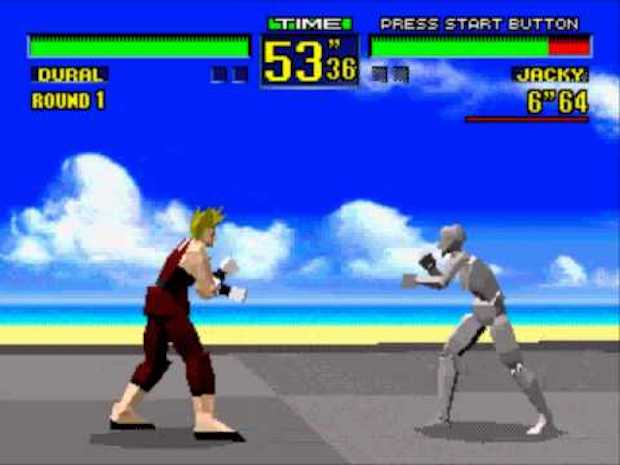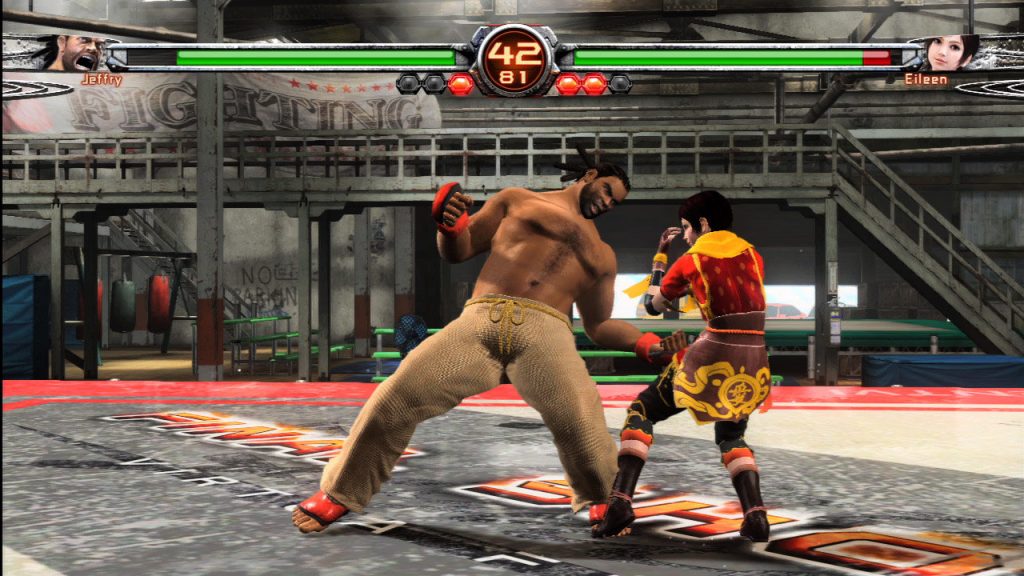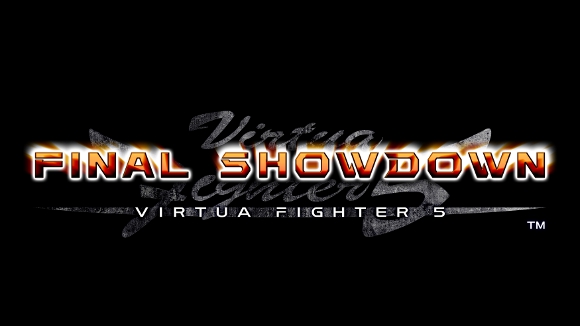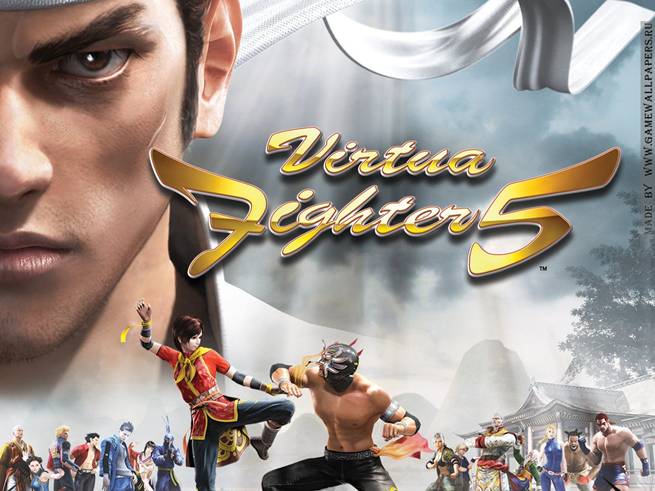
The newest fighting game to be released, Samurai Shodown, populates a rather large list of active fighting games, full of activity with online communities and offline tournaments. Among that list of fighting games and their sequels are franchises that are both relatively new and those with a great history within the genre. But one such classic fighting game franchise that hasn’t seen a new release in quite some time is Virtua Fighter, -the- original 3D fighting game franchise. What’s up with Virtua Fighter, and what is it about? We’ll take a look in our video on what the hell happened to Virtua Fighter.
Virtua Fighter is the first 3D fighting game franchise, and belongs to SEGA. The first Virtua Fighter game was developed by the AM2 development team within SEGA, responsible for many SEGA arcade classics, and active up until SEGA’s exit from the console market. Virtua Fighter is unique compared to other franchises in that the evolution or any introduced changes in gameplay mechanics outwardly seems minimally complicated, with no meters to manage as you see in other games. But while Virtua Fighter introduced different types of stages in its third iteration and introduced throws in its second iteration, the core gameplay of Virtua Fighter basically stays the same throughout each entry. Players have access to directional inputs and three buttons – Punch, Kick, and Guard, and combinations of these inputs, executed with specific timing, will yield unique attacks depending on the character.
Unlike Street Fighter, where characters generally have a couple of special attacks in addition to having access to “normal” attacks that come out when a button is pressed separately from a directional input sequence, Virtua Fighter has a list of combos and attacks available to each character. Combos are often high-damage, encouraging players to choose their moments to attack well, and to keep their guard up so as to avoid losing the round. Another danger to losing a round lies in ring-outs – if either opponent falls out of the ring due to their own error or due to advances from the opponent. In summary, this all adds up to gameplay that can be explosive with rounds that don’t last very long.
Virtua Fighter‘s consistency as a franchise is not only found in its gameplay but also in its artistic choices. It can be seen in the way that the characters are designed – mostly simple and uncomplicated. While fighting game franchises aren’t all known for their stories, Virtua Fighter in general doesn’t place nearly as much of an emphasis on having a sprawling and grandiose story as franchises such as Mortal Kombat or Tekken do. The sound effects and accompanying soundtracks for each Virtua Fighter game aim to capture a specific and consistent feeling of the early arcade heyday of SEGA – the hit effects sound “heavy” and suggest emphasis, with characters floating as they are juggled, while the soundtracks are generally bright and action-oriented on the whole. Guilty Gear favors hard rock and Tekken favors electronic music, but Virtua Fighter is most easily described as upbeat, even in its more subdued tracks.
The first Virtua Fighter game released for arcades in 1993. For some time, during the earlier prominence of arcades, Virtua Fighter was a premiere game and fighting game to play, along with some of the bigger names such as Street Fighter II. It started with a limited roster, as most fighting games – the protagonist Akira Yuki, along with the siblings Jacky and Sarah Bryant, Kage-Maru the ninja, Jeffry McWild, Wolf Hawkfield, and Lau Chan and his daughter Pai Chan. While a far cry from the rendering of games today, the blocky polygon models were also trailblazing upon release and still to this day have their own charm. Virtua Fighter was a ground-breaking release, and pushed and inspired developers from around the globe – it informed Sony’s decision to orient the first PlayStation around 3D graphics.
The next release in the Virtua Fighter franchise is Virtua Fighter 2 – widely regarded as one of the most popular titles amongst the franchise’s enthusiasts. It only introduced two new characters – the young Lion Rafale from France, and the drunken master fighter Shun Di. The limited introduction of new characters is another Virtua Fighter hallmark – unlike franchises such as Street Fighter and Tekken that have full franchise character lists that are more than twice the size of Virtua Fighter‘s own. All characters now have a throw to use, which adds complexity to the game, threatening players who guard too often.
This game, too, was widely-lauded for its 60 frames per second running speed, new gameplay modes, and great graphical attention to detail. It has been ported to Xbox 360 and PS3, and the SEGA Saturn version (a port that was by accounts labor-intensive,) was considered one of the essential titles for the console. Arguably, this title also has one of the better soundtracks amongst the franchise.
Following is Virtua Fighter 3, first releasing for arcades in 1996, and then for the Dreamcast, SEGA’s final console, in 1998. It introduced new characters Aoi Umenokoji and Taka-Arashi to the franchise. Additionally, Virtua Fighter 3 significantly changed up the series by adding slopes and stairs to stages. While an attempt at adding new dimension to gameplay, it arguably introduces undue unbalance as well, significantly boosting potential damage done to opponents in a series that is already high-damage. Virtua Fighter 3 is also notable for introducing a Dodge button – a feature exclusive only to this third iteration in the franchise.
All Virtua Fighter titles have received updated releases, something of an artifact for the genre due to the introduction of DLC and Internet-based developer updates that allows characters and new features to be introduced to existing game packages rather than manufacturing a new game disc and putting it onto retail shelves. But Virtua Fighter 3 received an updated release called Virtua Fighter 3tb – or Virtua Fighter 3 Team Battle, that introduced team-based fights between opponents rather than the standard one-versus-one fights. Virtua Fighter 3 continued the franchise’s reputation as a leader in 3D fighting games, scoring well amongst critics particularly for its continued graphical evolution and sophistication, and eagerly anticipated by fans prior to release in arcades.
By the time of the fourth Virtua Fighter‘s release, SEGA had made their exit from the console gaming scene, and so Virtua Fighter 4 would release initially for arcades and then for the PlayStation 2. Virtua Fighter 4 introduced new characters – the Chinese monk Lei-Fei and the mysterious Vanessa Lewis, with updated releases Virtua Fighter 4: Evolution and Virtua Fighter 4: Final Tuned introducing the intense Brad Burns and Goh Hinogami. Interestingly, Taka-Arashi from the third title was omitted in Virtua Fighter 4, due to the developers not being able to incorporate newly-introduced gameplay mechanics with Taka’s generally larger frame and some of his attack animations. Gone are the uneven stages introduced in the third game – we’re back to flattened stages, and the franchise would maintain this philosophy in the future.
Notably, Virtua Fighter 4 introduced a robust Training for newcomers or those looking to level up their gameplay. While it is easy for anyone to simply hop onto a controller and push buttons to make attacks come out, fighting games are often regarded as complex and difficult to get better at as you dive deeper into them, and while more recent fighting games have made great strides in adding helpful tutorial modes, Virtua Fighter 4 stood out amongst its competition in this respect.
This brings us to Virtua Fighter 5 and its updates Virtua Fighter 5 R and Virtua Fighter 5: Final Showdown, with Final Showdown being the latest release in the Virtua Fighter 5 franchise. It should also be noted that this latest release dates to 2012 and is currently available not on the current generation of consoles, but on PS3, 360 and in some arcades, with the PS3 and 360 versions only available for purchase digitally and not having a packaged release.
Whereas the Virtua Fighter franchise has lived through the heyday of arcades (and even significantly contributed to the success of arcades,) by the time of Virtua Fighter 5, arcades have noticeably decreased in popularity, particularly in the West. That being said, per series tradition, Virtua Fighter 5 introduced new characters Eileen and El Blaze, with the updated release R introducing Jean Kujo and re-introducing Taka-Arashi, with the full roster featured in R and Final Showdown marking a complete list of twenty playable characters in Virtua Fighter history.
So what’s next for Virtua Fighter? Soul Calibur, whose fifth release was followed by dire straits for the franchise, still managed a sixth release that came out last year. Dead or Alive from Koei-Tecmo, another 3D fighting game franchise, also continues to this day, with its sixth release coming out this past March, and with new characters introduced since release.
Meanwhile, franchises that Virtua Fighter used to compete with, such as big names Street Fighter and Tekken, are highly active with major competitive presences amongst the genre. In general, the decline of Virtua Fighter overlaps with the decline of the brand of SEGA since its exit from the console market – which is rather unfortunate, since Virtua Fighter used to be one of SEGA’s premier brands, right up there with Sonic the Hedgehog. But when asked about the Virtua Fighter franchise or a sixth title, SEGA has generally not said much across the years, not until this key tweet from this past November.
And that, unfortunately, was a hard denial of anything being in the works for the franchise. While SEGA did host and promote the SEGA Cup, a competitive event, for two years following the release of Final Showdown, SEGA hasn’t promoted the franchise much since then in the absence of new content to draw attention to, and the franchise hasn’t received any sort of competitive gaming push as have other prominent fighting games.
Virtua Fighter will always be an icon, but for now it languishes in the absence of greater coordinated effort to promote the franchise or without SEGA either re-releasing Final Showdown or working on a sixth Virtua Fighter game. What are your experiences with the Virtua Fighter franchise? What makes it stand out compared to other fighting games that you know about? Can it succeed amongst the great mass of fighting games that are available today? Let us know your thoughts in the comments section below. As always, thanks for watching.


















